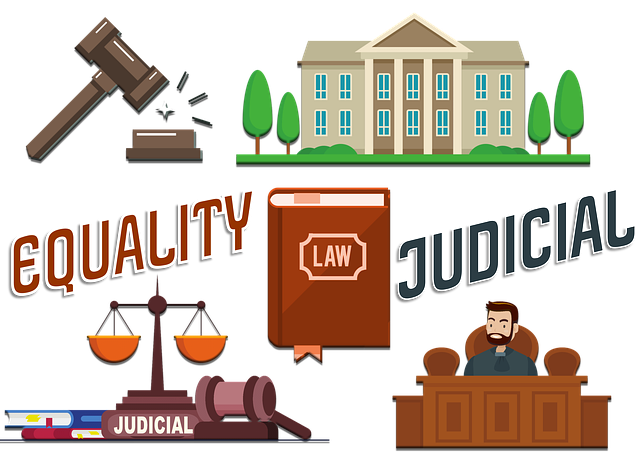The Oregon Child Welfare Court is a specialized system dedicated to protecting vulnerable children through cases of abuse, neglect, and dependency. Understanding its court procedures is vital for stakeholders, as it facilitates family reunification or alternative permanent placements. Navigating the process requires knowledge of strict timelines, legal jargon, and guidelines outlined in the Child Welfare Court Guide. Key steps include initial hearings, case review hearings, and long-term care planning, enabling active participation, protection of rights, and positive outcomes for Oregon's youth.
“Unveiling the Oregon Child Welfare Court: A Comprehensive Guide
This article offers a thorough exploration of the Oregon Child Welfare Court system, designed to protect and nurture at-risk children. From an overview of its purpose and operations to a step-by-step breakdown of court procedures, we demystify the process. We delve into the roles of key players, from judges and social workers to attorneys and foster parents, ensuring all involved understand their responsibilities.
Additionally, this guide navigates essential court documents, highlights legal rights, and provides practical tips for successfully navigating the Oregon child welfare court system.”
- Oregon Child Welfare Court: An Overview
- – Brief introduction to the court system and its purpose.
- Court Procedures in Oregon: Step-by-Step Guide
- – Detailed breakdown of the child welfare court process from filing to resolution.
- Understanding Key Players: Roles and Responsibilities
- – Explanation of the different parties involved, including judges, social workers, attorneys, and foster parents.
Oregon Child Welfare Court: An Overview

The Oregon Child Welfare Court plays a pivotal role in ensuring the safety and well-being of vulnerable children within the state. This specialized court system is designed to handle cases involving child abuse, neglect, and dependency, with a primary focus on family reunification or alternative permanent placements. Understanding the court process is essential for all involved parties, from social workers and attorneys to birth parents and foster care providers.
Navigating court procedures in Oregon requires familiarity with strict timelines, legal terminology, and specific guidelines. The child welfare court guide typically includes initial hearings, where the court assesses the child’s immediate safety and makes temporary custody decisions. Subsequent proceedings involve case review hearings, where progress is evaluated, and plans for long-term care are established. Insight into these court procedural steps empowers individuals to actively participate in the process, advocate for their rights, and ultimately contribute to positive outcomes for Oregon’s youth.
– Brief introduction to the court system and its purpose.

The Oregon Child Welfare Court is a crucial entity within the state’s judicial system, dedicated to ensuring the safety and well-being of vulnerable children. This court system plays a vital role in protecting minors who may be abused, neglected, or at risk of harm, by providing a legal framework for intervention and support. The primary purpose is to promote the best interests of children while also involving families in the process, offering guidance, and seeking resolutions that can break cycles of neglect and abuse.
Understanding the court procedures in Oregon is essential for anyone navigating the child welfare system. Court guides and procedural insights provide valuable information on how cases are handled, from initial hearings to trials and appeals. These processes are designed to be protective yet fair, ensuring that all parties involved, including parents or guardians, foster care providers, and children, have defined rights and opportunities to participate in decision-making. By familiarizing themselves with these procedures, individuals can better prepare for court appearances, understand their options, and actively contribute to the court’s goal of providing stable and nurturing environments for Oregon’s youth.
Court Procedures in Oregon: Step-by-Step Guide

Navigating court procedures in Oregon’s child welfare system can be complex, but understanding the steps involved is crucial for all parties involved. The process begins with a petition being filed with the court, either by a government agency or a private individual, alleging that a child is dependent and in need of protection. This is followed by an initial hearing where the judge reviews the case, ensuring the child’s immediate safety and well-being. Key players, including parents, guardians, and social workers, are assembled to discuss potential resolutions and the child’s future placement.
A key aspect of Oregon’s court procedures is the focus on the best interest of the child. This involves thorough assessments, frequent reviews, and multiple opportunities for input from all involved parties. The court may order services or interventions aimed at reunifying families, or it might decide upon alternative arrangements such as foster care or permanent guardianship. Throughout this process, clear communication, adherence to legal timelines, and regular updates from all stakeholders remain paramount.
– Detailed breakdown of the child welfare court process from filing to resolution.

The Oregon Child Welfare Court process begins with a petition filed by a concerned party, such as a social worker or family member, alleging that a child is in need of protection and supervision due to abuse, neglect, or other harmful situations. This initial step is crucial in triggering the court’s involvement and setting in motion a series of procedures designed to ensure the child’s safety and well-being. Once filed, the petition is reviewed by a judge who determines if there is sufficient cause to proceed, a process known as an ex parte hearing. If deemed necessary, a formal hearing is scheduled, notifying all involved parties and providing them with an opportunity to present their cases.
From this point forward, the court procedures in Oregon child welfare cases are meticulously structured. During the hearing, evidence is presented, witness testimonies are heard, and legal arguments are exchanged. The judge then makes a decision based on the information provided, either ordering immediate protective measures or dismissing the petition if the allegations cannot be substantiated. If the case proceeds, further court dates are set for ongoing monitoring and case management. Ultimately, the goal is to resolve the case in the best interest of the child, whether through reunification with family, placement in a foster home, or other permanent arrangements, while ensuring that the child’s needs are met and their safety is secured throughout the process.
Understanding Key Players: Roles and Responsibilities

In the Oregon child welfare court, several key players are involved in ensuring the well-being and safety of children. The primary responsibility lies with the judge, who presides over cases and makes crucial decisions regarding a child’s future. They interpret laws and guidelines to determine the best course of action, often working closely with social workers and lawyers. Social workers play an integral part by investigating and presenting cases to the court, offering insights into a child’s home environment and needs. Their role is to advocate for the child’s interests while also supporting families in improving their circumstances.
Navigating court procedures in Oregon requires understanding these roles and the underlying court process. The child welfare court guide provides valuable insights into how cases are handled, from initial hearings to trial and final dispositions. Understanding these procedural steps is essential for all involved—from parents and guardians to legal representatives—to ensure a fair and efficient outcome. This knowledge empowers individuals to actively participate in their cases and make informed decisions throughout the court procedures Oregon.
– Explanation of the different parties involved, including judges, social workers, attorneys, and foster parents.

The Oregon child welfare court is a complex system involving several key parties who work together to ensure the best interests of children are protected. At the heart of this process are judges, responsible for presiding over hearings and making critical decisions regarding a child’s future. They interpret laws and guidelines to determine the appropriate course of action, whether it involves placing a child in foster care, reuniting families, or implementing other necessary interventions.
Other essential participants include social workers, who play a pivotal role in investigating and assessing family situations, gathering evidence, and preparing case plans. Attorneys represent the interests of various stakeholders—biological parents, foster parents, and the child—guiding them through court proceedings and advocating for their rights. Foster parents, who temporarily care for children while their families work towards reunification or alternative arrangements, also have a significant role in providing stability and support to these vulnerable individuals. Understanding the roles of these parties is crucial for anyone navigating the Oregon child welfare court procedures and seeking insights into the court’s operational processes.
